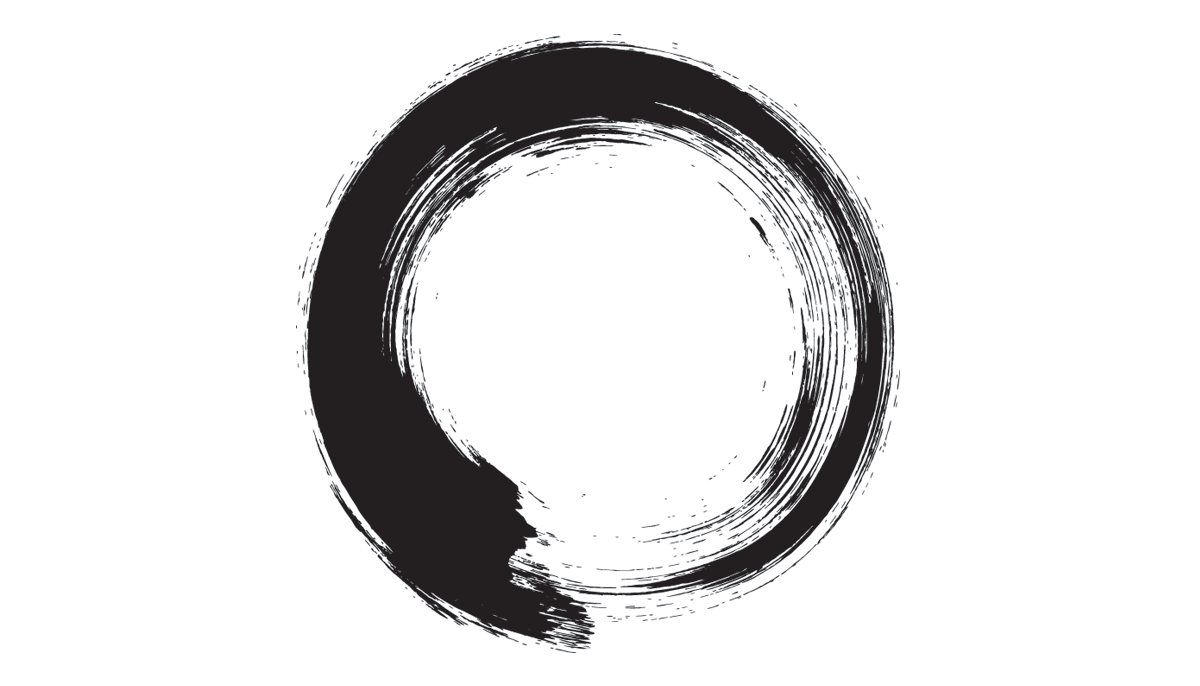
The Beauty of Imperfection
Dec 06, 2021In Zen, ensō, 円 相 "circular form" is a circle that is hand-drawn in one or two uninhibited brushstrokes to express a moment when the mind is free to let the body create. Drawing ensō is a disciplined-creative practice of Japanese ink painting, sumo-e. The tools and mechanics of drawing the ensō are the same as those used in traditional Japanese calligraphy: One uses an ink brush to apply ink to washi (a thin Japanese paper).
Ensō was the first symbol created in the Zen Buddhist tradition. It is said that the very first ensō ever painted was brushed for a student in need of an image to meditate upon, as a visual representation of the concept of enlightenment. The earliest painting of an ensō was recorded during the life of its creator, the Chinese Zen Master Kyozan (814-890).

The zen circle is an ancient symbol that takes on a variety of meanings and concepts. It symbolizes many more things, for instance some of the common subjects are: inner strength, elegance, vast space of the Universe and the void, the circle of life and death, cyclical nature of life, acceptance and beauty of imperfection, refinement of consciousness, the moment of creation, perfect harmony, the state of natural “flow” and continuity of energy. It also is a symbol that represents the singular moment in time when the artist creates. It is a concept that resonates throughout various cultures, ideologies and religions. The enso is a symbol of attaining complete spiritual and mental enlightenment, which also makes this symbol so valuable. The hand-drawn circle in itself is not only a sacred symbol or a calligraphic practice, but also a spiritual lesson and part of the Buddhist practice.
This symbol of enlightenment can be drawn either by itself, or next to any sort of inscription: it could be a quote, a poem or simply words of wisdom said by the master behind the enso or someone different. The inscription is most commonly situated next to the ensō, however it can also be located anywhere on the paper – at the top of the zen circle, at the bottom or even on the inside.
Traditionally, the inscription is a quote from a Zen master or a Buddhist text, however it can be anything. It is common for the inscription to be humorous and offer some wisdom or insight in the form of a light-hearted haiku, reminding us to enjoy our time and not take earthly matters too seriously. It is also common for the artists or zen masters to “sign” their enso by adding their name on the paper as well.

“Someone tried to explain Zen to me one time. I was lectured on how to do an enso correctly. Once the circle disappeared so did he.”
https://www.ironmantismartialarts.com/offers/3XuDujLs/checkout
- Sifu Jeff Hughes
Get Our Monthly Newsletter
New moves, motivation, and classes delivered to your inbox.
We hate SPAM. We will never sell your information, for any reason.


